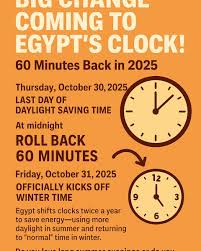The Importance of Daylight Savings: What You Need to Know

Introduction to Daylight Savings
Daylight saving time (DST) is a practice that involves setting the clocks forward by one hour during the warmer months to extend evening daylight. Observed in many countries around the world, the concept was primarily introduced during World War I to conserve fuel. Today, it remains relevant, affecting various aspects of our daily lives, work productivity, and energy consumption.
Current Events Surrounding Daylight Savings
As we approach the end of October, discussions surrounding the continuation of daylight savings time intensify. In 2023, a proposal in the UK Parliament to abolish the biannual clock change has gained momentum. The survey conducted by the government revealed that 81% of respondents preferred a permanent change, either to keep summer hours or standard time. This reflects a growing sentiment among the public that the disruption caused by shifting clocks might outweigh its benefits, especially in light of modern work-from-home trends.
In the United States, similar discussions are taking place. Many states have either moved to make daylight saving time permanent or are considering legislation to do so, resulting in a fragmented approach throughout the country. States such as Florida and California have made headlines with their legislative efforts, joining the debate on whether the benefits of extended daylight in the evenings are worth the disruptions caused in spring and autumn.
Impacts of Daylight Savings
Research has shown that the time change can have both positive and negative effects on society. Some studies suggest that longer daylight in the evenings can lead to an increase in outdoor activities and reduced energy consumption, but negative impacts on health are also reported. Clocks springing forward in March have been linked to an increase in heart attacks and sleep disturbances as people adjust. Moreover, data shows a noticeable rise in car accidents and workplace injuries the Monday following the shift. This duality prompts a careful consideration of whether the current practice should continue or be re-evaluated.
Conclusion: The Future of Daylight Savings
As debates about the efficacy of daylight savings time continue, societal and governmental attitudes seem to be shifting towards a reconsideration of this age-old practice. The potential for permanent changes could dramatically influence daily routines, energy usage, and general well-being. While the immediate future remains uncertain, one conclusion is clear: the biannual clock change will continue to be a topic of public discourse until a consensus is reached on its practicality and impact on modern life.









